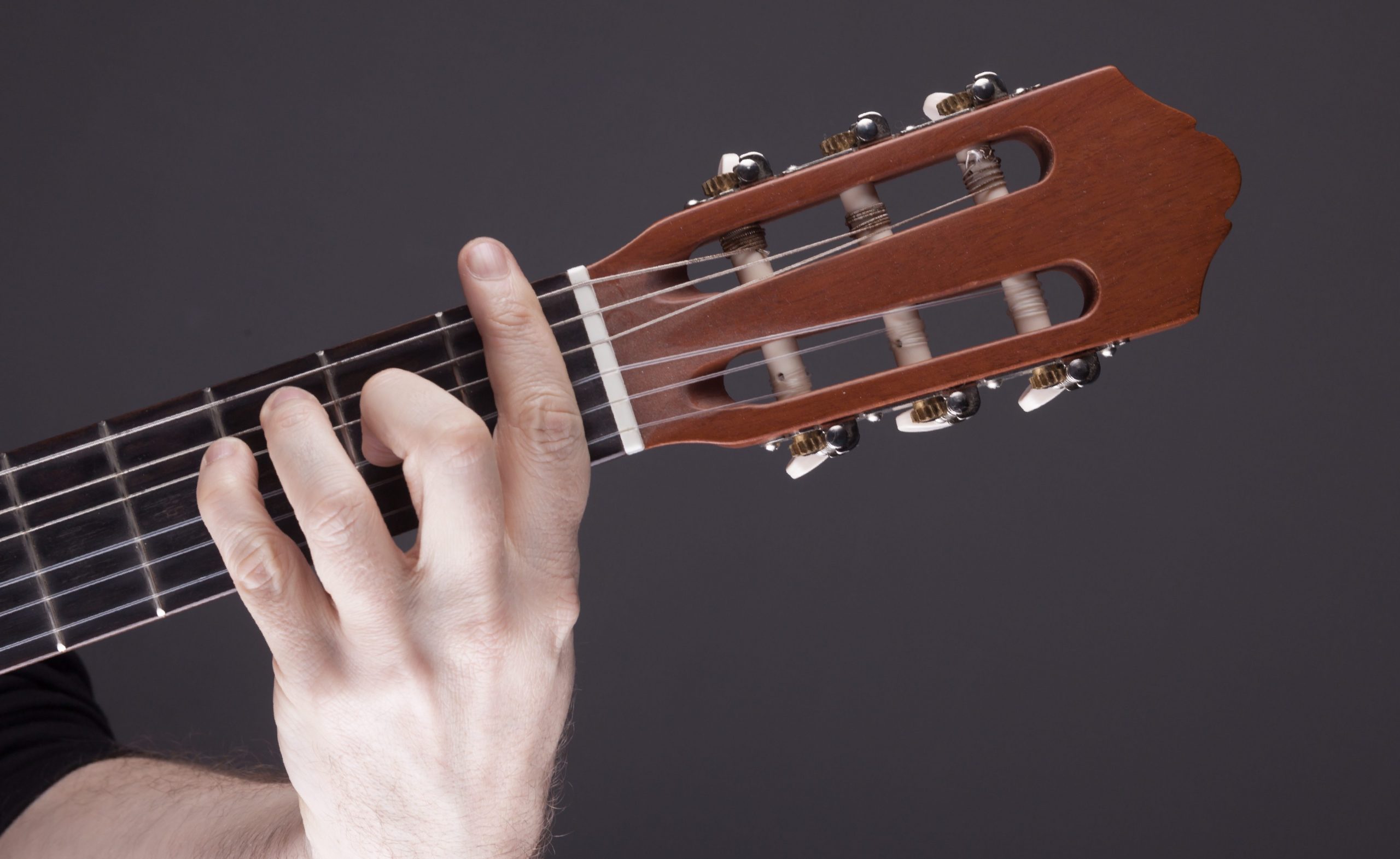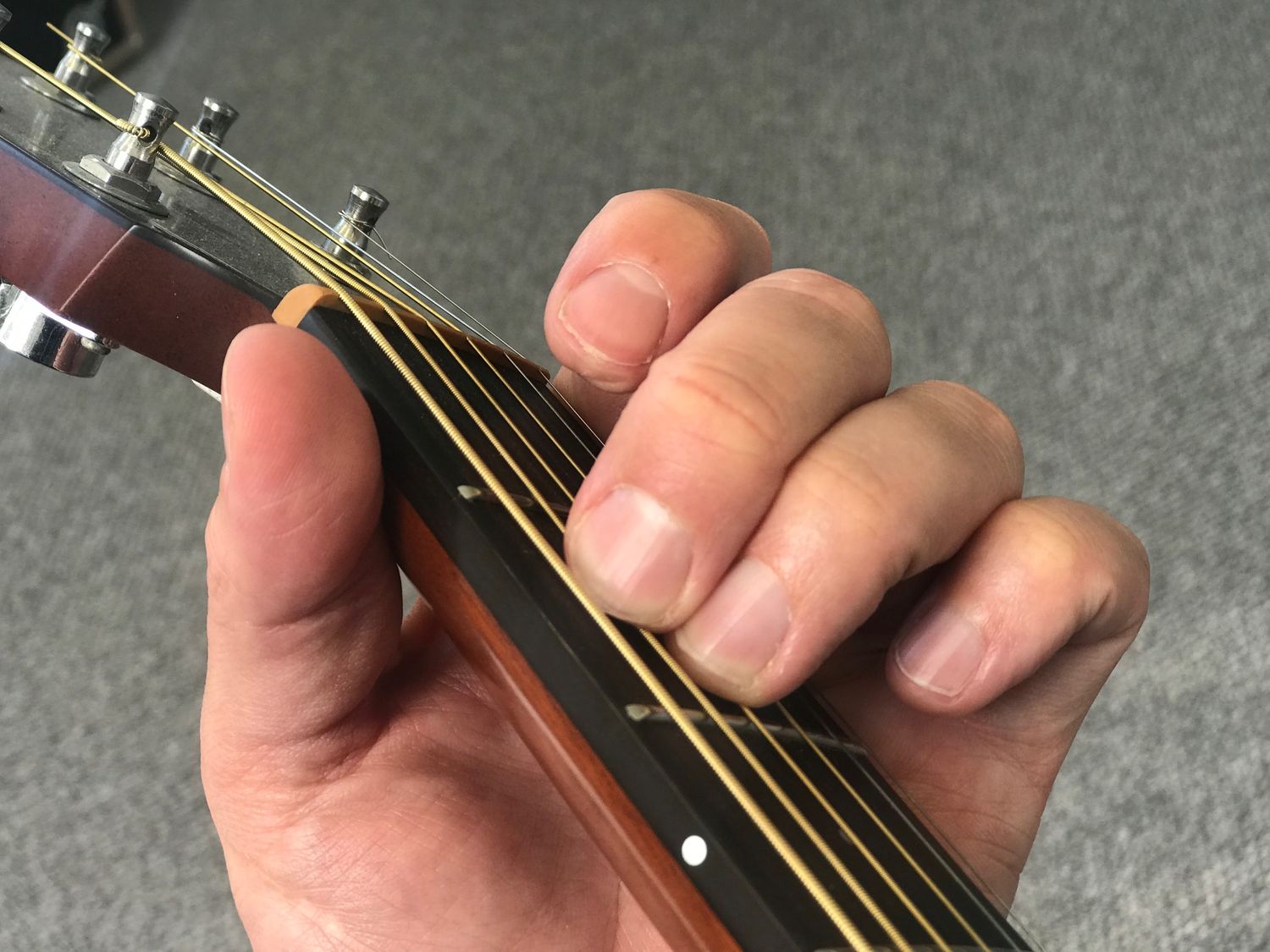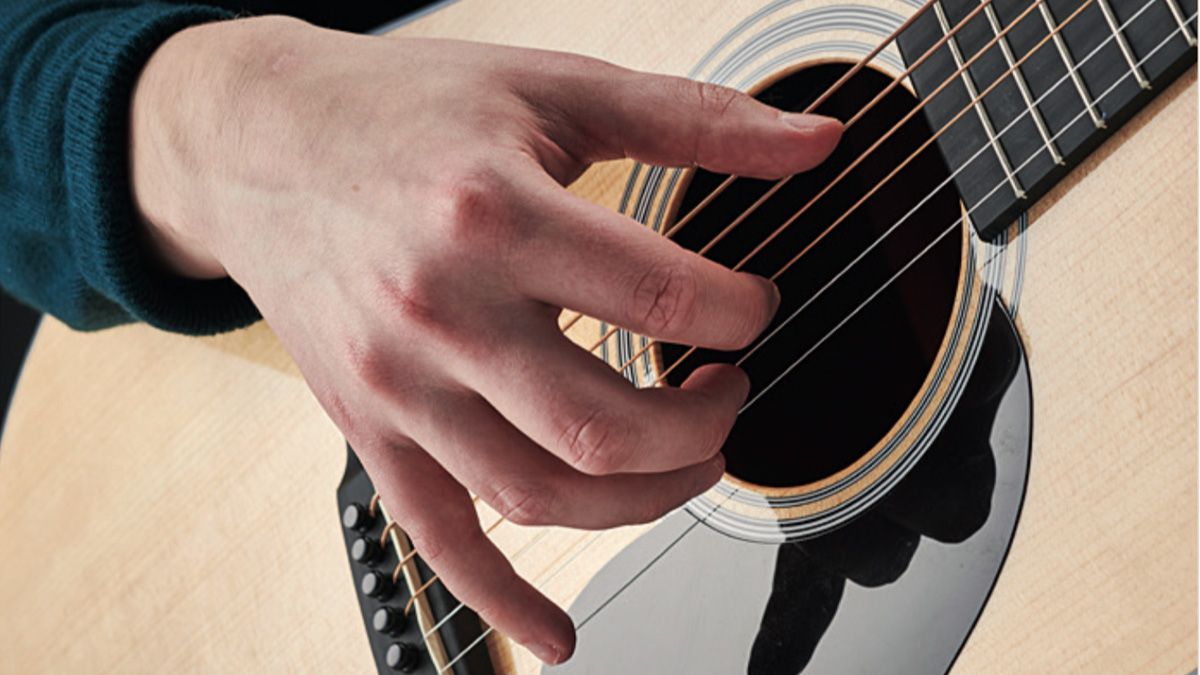Home>Instruments>Guitar>How To Play F# On Guitar


Guitar
How To Play F# On Guitar
Published: February 13, 2024
Learn how to play F# on guitar with our step-by-step guide. Master the techniques and improve your guitar skills today.
(Many of the links in this article redirect to a specific reviewed product. Your purchase of these products through affiliate links helps to generate commission for AudioLover.com, at no extra cost. Learn more)
Table of Contents
Introduction
Playing the guitar is a rewarding and fulfilling endeavor, and mastering various chords is essential for any aspiring guitarist. The F# chord, in particular, adds a unique and rich sound to your repertoire. In this comprehensive guide, we will explore the intricacies of playing the F# chord on the guitar, covering basic positions, variations, smooth transitioning, common progressions, and more.
Learning to play the F# chord opens up a world of musical possibilities, allowing you to create captivating melodies and harmonies. Whether you're a beginner seeking to expand your chord knowledge or an experienced guitarist looking to refine your skills, understanding the F# chord and its applications is a valuable asset in your musical journey.
Throughout this guide, we will delve into the fundamentals of the F# chord, providing detailed explanations, practical tips, and common progressions to help you integrate this chord seamlessly into your playing. By the end of this article, you will have a comprehensive understanding of the F# chord and the proficiency to incorporate it fluidly into your musical repertoire. So, grab your guitar, and let's embark on this enriching musical exploration together.
Understanding the F# Chord
Before delving into the specific finger placements and variations, it’s crucial to comprehend the structure and composition of the F# chord. The F# chord, also known as F# major, consists of three essential notes: F#, A#, and C#. These notes collectively form the harmonic foundation of the chord, delivering its distinct tonality and character.
The F# chord is categorized as a major chord, renowned for its bright and uplifting sound. When strummed or plucked, the F# chord emanates a sense of warmth and resonance, making it a popular choice in various musical genres, including rock, pop, and folk.
To play the F# chord effectively, it’s imperative to understand the role of each note within the chord’s structure. The F# note serves as the root, anchoring the chord and establishing its fundamental pitch. The A# note functions as the major third, contributing to the chord’s overall major tonality. Lastly, the C# note acts as the perfect fifth, enhancing the chord’s harmonic richness and stability.
Mastering the F# chord involves familiarizing yourself with the interplay of these notes, understanding their individual contributions, and honing your ability to seamlessly transition between them. By developing a comprehensive understanding of the F# chord’s composition, you can elevate your guitar playing skills and infuse your music with the vibrant essence of this captivating chord.
Basic F# Chord Positions
When it comes to playing the F# chord on the guitar, mastering the basic finger positions is the first step toward proficiency. There are several common ways to fret the F# chord, each offering a unique approach to producing its distinctive sound. Here are two fundamental F# chord positions:
- Barre Chord: The barre chord is a popular method for playing the F# chord. To execute this position, use your index finger to bar the entire second fret, effectively pressing down on all six strings. Next, position your ring finger on the fourth fret of the A string, your pinky on the fourth fret of the D string, and your middle finger on the third fret of the G string. Ensure that each string rings out clearly without any muffled notes, and strum from the low E string down to achieve the full resonance of the F# chord.
- Alternative Open Chord: Another approach to playing the F# chord involves an alternative open position. Start by placing your index finger on the second fret of the low E string, muting the A string with the underside of your index finger. Then, position your ring finger on the fourth fret of the A string, your pinky on the fourth fret of the D string, and your middle finger on the third fret of the G string. Strum from the low E string down, ensuring that each note is clear and resonant to produce the full-bodied sound of the F# chord.
Mastering these basic F# chord positions lays a solid foundation for your guitar journey. Practice transitioning between these positions smoothly, and experiment with different strumming patterns to unlock the expressive potential of the F# chord.
F# Chord Variations
Exploring variations of the F# chord allows for creative expression and versatility in your guitar playing. These alternative fingerings and voicings offer a fresh perspective on incorporating the F# chord into your musical arrangements. Here are a few notable F# chord variations to enrich your playing:
- F#7 Chord: The F#7 chord introduces a bluesy and dynamic tonality to your repertoire. To play this variation, utilize the barre chord position by barring the second fret with your index finger. Then, place your ring finger on the fourth fret of the A string and your middle finger on the third fret of the G string. The F#7 chord infuses your compositions with a captivating sense of tension and release, making it a valuable addition to your chord vocabulary.
- F#m Chord: Embracing the melancholic allure of the F#m chord adds depth and emotion to your musical compositions. To execute this variation, position your index finger on the second fret of the low E string, your ring finger on the fourth fret of the A string, your pinky on the fourth fret of the D string, and your middle finger on the second fret of the G string. The F#m chord evokes a poignant and introspective ambiance, expanding the expressive range of your guitar playing.
- F#add9 Chord: Incorporating the F#add9 chord introduces a lush and ethereal quality to your chord progressions. To play this variation, place your index finger on the second fret of the low E string, your ring finger on the fourth fret of the A string, your pinky on the fourth fret of the D string, and your middle finger on the third fret of the G string. The F#add9 chord infuses your music with a sense of intrigue and sophistication, offering a captivating alternative to the standard F# chord.
By integrating these F# chord variations into your practice sessions and compositions, you can elevate the sonic tapestry of your guitar playing, infusing your music with depth, emotion, and creative flair.
Tips for Playing F# Chord Smoothly
Mastering the F# chord requires patience, practice, and attention to technique. To achieve a seamless and resonant rendition of the F# chord, consider the following tips and techniques:
- Optimize Finger Placement: Ensure that your fingers are positioned close to the frets to produce clear and distinct notes. Precision in finger placement is essential for achieving a resonant and balanced sound when playing the F# chord.
- Apply Proper Finger Pressure: Maintain consistent and firm finger pressure on the strings to prevent any muted or buzzing notes. Striking the right balance between finger pressure and dexterity is crucial for producing a clean and articulate F# chord.
- Focus on Thumb Placement: Position your thumb on the back of the guitar neck to provide stability and leverage for fretting the F# chord. A well-placed thumb facilitates smooth transitions and enhances overall dexterity while playing the chord.
- Practice Smooth Transitions: Dedicate focused practice sessions to transitioning between the F# chord and other chords in your repertoire. Smooth transitions are key to integrating the F# chord seamlessly into your playing, allowing for fluid chord progressions and musical expression.
- Experiment with Finger Angle: Explore the angle at which your fingers press down on the strings to find the optimal position that minimizes string buzz and maximizes note clarity. Adjusting the angle of your fingers can significantly enhance the resonance of the F# chord.
- Utilize Proper Posture and Hand Position: Maintain a relaxed yet attentive posture while playing, and ensure that your hand position allows for unhindered finger movement across the fretboard. A balanced and ergonomic posture contributes to playing the F# chord with ease and precision.
By incorporating these tips into your practice routine and remaining attentive to your technique, you can refine your ability to play the F# chord smoothly and confidently, unlocking its full musical potential.
Common F# Chord Progressions
Understanding common chord progressions involving the F# chord opens up a myriad of musical possibilities, allowing you to create captivating compositions and explore diverse tonal landscapes. Whether you’re crafting original songs or interpreting existing pieces, integrating the F# chord into these popular progressions can enrich your musical endeavors:
- F# – B – E – A: This classic progression, often employed in rock and pop music, features the F# chord as the foundational starting point. Transitioning to the B, E, and A chords from F# creates a compelling harmonic journey, lending itself to anthemic and uplifting musical arrangements.
- F# – C#m – D#m – B: Incorporating the F# chord into this progression introduces a blend of major and minor tonalities, offering a versatile backdrop for evocative songwriting. The interplay between the F#, C#m, D#m, and B chords evokes a sense of introspection and emotional depth, making it a popular choice in ballads and reflective compositions.
- F# – G#m – A#m – B: This progression, characterized by its smooth and melodic flow, showcases the F# chord within a sequence that resonates with a wide range of musical styles. The harmonic interweaving of the F#, G#m, A#m, and B chords lends itself to creating captivating melodies and compelling harmonic resolutions.
- F# – A – D#m – C#: Embracing the F# chord in this progression infuses the musical landscape with a blend of uplifting and contemplative tonalities. The progression’s dynamic movement from F# to A, D#m, and C# offers an expressive canvas for crafting memorable and emotive musical narratives.
- F# – Bm – E – F#: Incorporating the F# chord into this progression introduces a blend of major and minor tonalities, offering a versatile backdrop for evocative songwriting. The interplay between the F#, Bm, E, and F# chords evokes a sense of introspection and emotional depth, making it a popular choice in ballads and reflective compositions.
By integrating the F# chord into these common progressions and exploring their harmonic dynamics, you can infuse your musical creations with depth, emotion, and captivating tonal nuances, elevating your guitar playing to new heights of creativity and expression.
Conclusion
Congratulations on embarking on this enriching journey to master the F# chord on the guitar. Throughout this comprehensive guide, we’ve delved into the fundamental aspects of the F# chord, from its composition and basic positions to versatile variations, smooth playing techniques, and common progressions. By understanding the harmonic richness and expressive potential of the F# chord, you’ve expanded your musical repertoire and honed your skills as a guitarist.
As you continue to practice and integrate the F# chord into your playing, remember that patience and dedication are key to mastering any new element of musical expression. Whether you’re drawn to the bright and uplifting sound of the F# major chord or the emotive depth of its variations, the versatility of the F# chord offers endless opportunities for creative exploration and musical storytelling.
By optimizing your finger placement, refining your transition between chords, and exploring diverse progressions, you can unlock the full potential of the F# chord, infusing your music with captivating melodies and harmonies. Whether you’re composing original pieces, interpreting beloved songs, or simply enjoying the process of musical discovery, the F# chord serves as a valuable tool for shaping your sonic identity as a guitarist.
As you continue to hone your craft, remember that each chord holds a unique story and emotional resonance. The F# chord, with its vibrant tonality and expressive versatility, enriches your musical narrative and empowers you to convey a wide spectrum of emotions through your playing.
So, pick up your guitar, embrace the enchanting allure of the F# chord, and let your musical journey unfold with creativity, passion, and unwavering dedication. As you navigate the boundless realm of guitar playing, may the F# chord be a steadfast companion, inspiring you to explore new horizons and weave captivating melodies that resonate with the soul.











